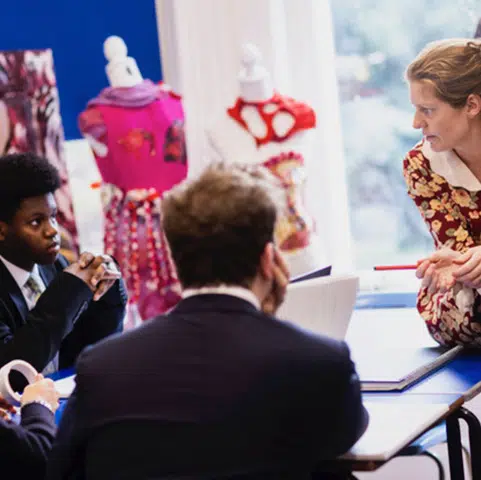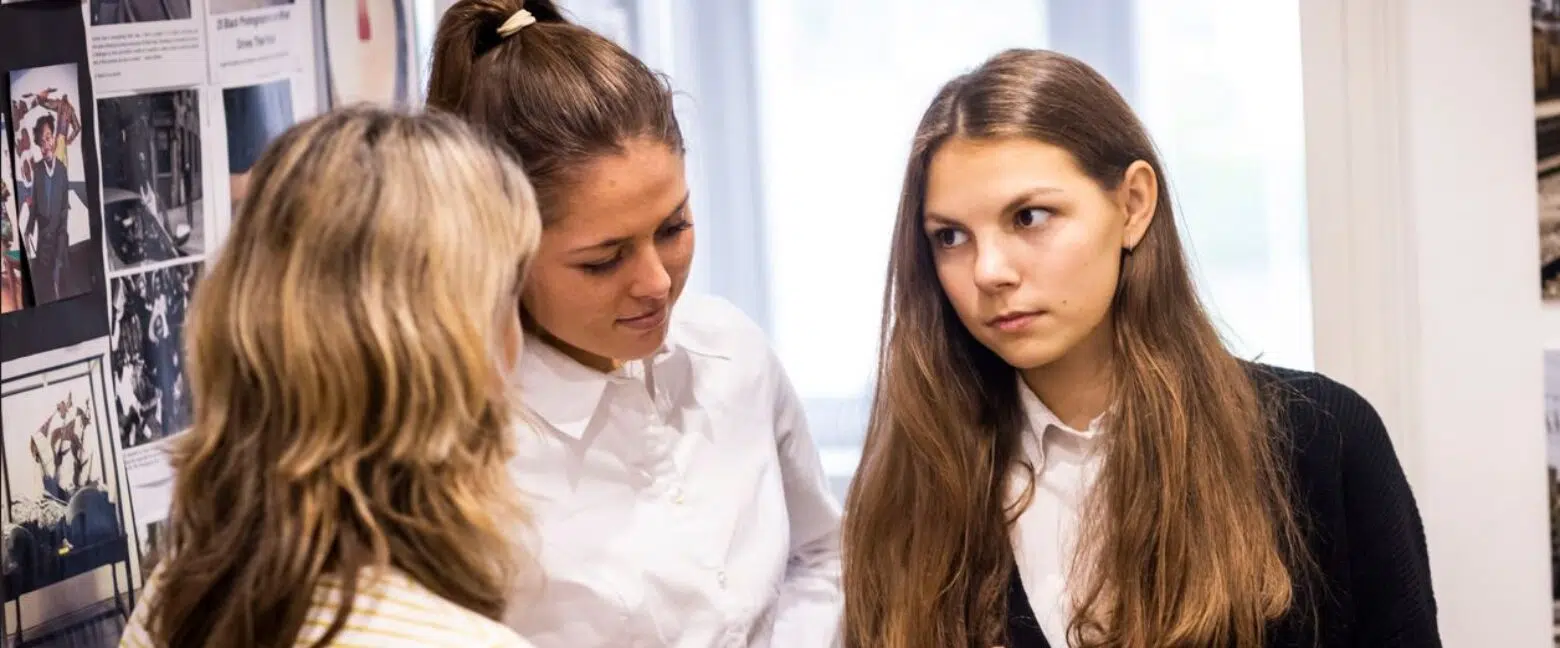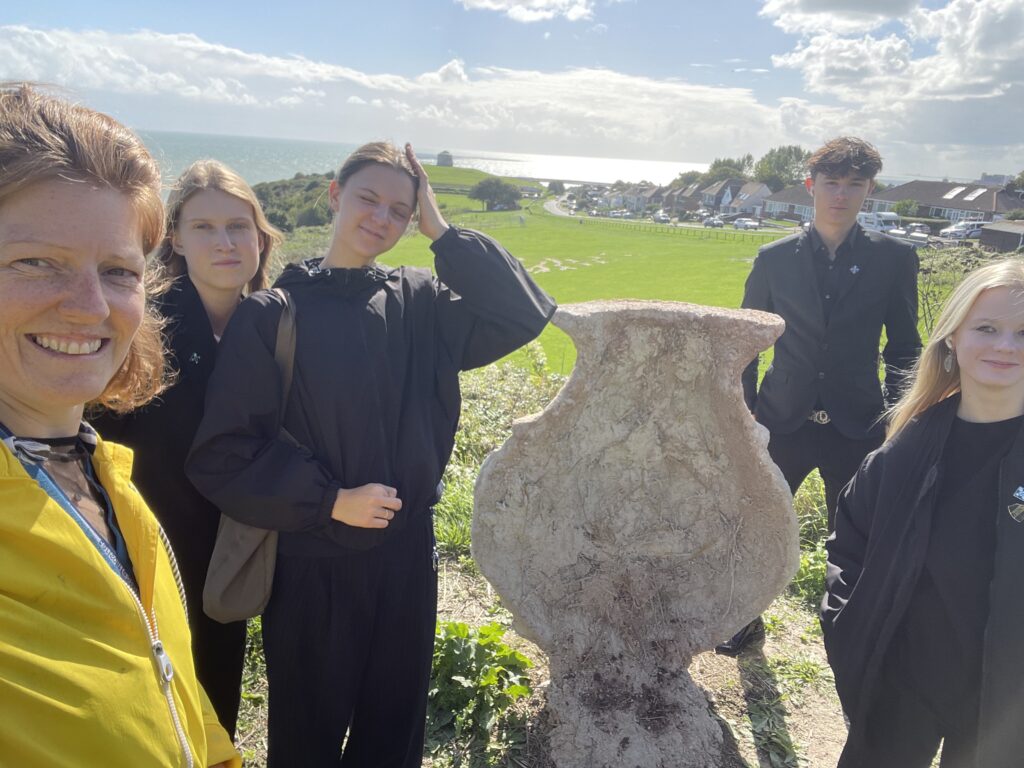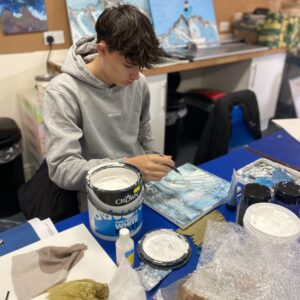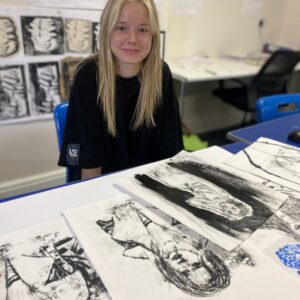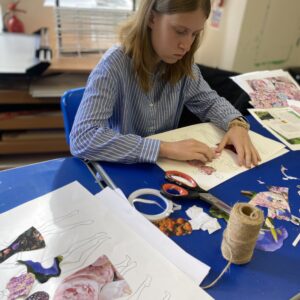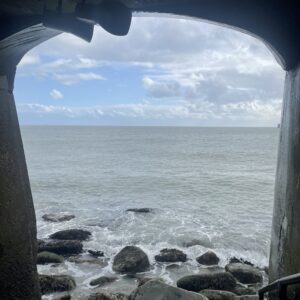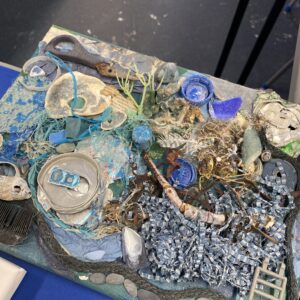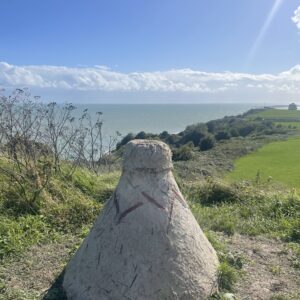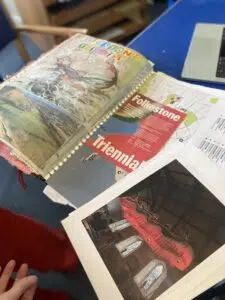
This summer, students at Earlscliffe have found powerful inspiration from an unexpected source: the streets, cliffs, and coastline of Folkestone itself. Thanks to the town’s celebrated Folkestone Triennial 2025, art students have been stepping far beyond the canvas, exploring meaning, culture, and identity through installations, sound pieces, textiles, and sculpture.
Art that Steps Outside the Frame
The Folkestone Triennial, themed “How Lies the Land” (looking at the History of Folkestone), has transformed the town into a living gallery, and Miss Grantham – who has been volunteering as a tour guide throughout the summer – has brought her passion back to the classroom. Sharing in-depth knowledge and first-hand experience, she encouraged students to explore the history and hidden stories of Folkestone, prompting them to ask a vital question: “How does your project actually affect life?”
This challenge has driven students to explore the importance and meaning behind their work, moving away from flat imagery and toward real-world relevance. The results are deeply personal and culturally rich, resonating both within the school community and beyond.
Culture Meets Creativity
At an international school like Earlscliffe, cultural understanding is at the heart of education. Through art, students have found a powerful way to share their perspectives and heritage.
Take Dora, for instance. Inspired by a textiles installation in St. Peter’s Church, she is now creating a large-scale ceiling-hung piece influenced by her Slovakian heritage with traditional fabrics.
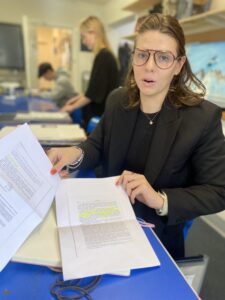
“An amulet should be protective and connect you to something meaningful,” Johanna explains. Her exploration of amulets spans centuries and continents – linking Vikings to Mayans, Christians to Egyptians – all long before global communication was possible.
Multi-Sensory Experiences & Unusual Media
The students didn’t stop at visual art. Sound, taste, and physical sensation became key themes in their exploration.
- With Hanna Tuulikki’s Love (Warbler Remix), students considered what it might be like if a bird could remix its own love song – an abstract idea brought to life through sound!
- Emeka Ogboh’s “Ode to the Channel” inspired deep discussion about how the sea could be felt, heard, and even tasted. Students listened to the soundscape while eating salty lollipops, imagining what drinks or food could pair with their own artwork to create a full sensory experience.
Art Meets Technology, Site Meets Story
For Lera, the digital installation Ghost Feed by John Gerrard – featuring a spider monkey scrolling endlessly on a tablet in a burning virtual forest – was a standout. Set on a large screen near Rocksalt, the piece opened up discussions about technology, attention, and lethargy, all through the language of gaming software and environmental commentary.
Sarah Trillo’s work on East Cliff prompted reflections on site-specific art. Her use of local plants (like the edible Alexander) and references to Roman remains sparked conversations about what lies beneath the earth – how nature and history are intertwined.
Empowering Innovation and Depth in the Classroom
This immersive experience has transformed how Earlscliffe students approach their own practice. They were each asked to identify one artist from the Triennial they personally connected with, using that as a springboard to develop their own individual voice and conceptual depth.
Rather than simply creating for the sake of technique, students are now asking why they make art, and how it can have an impact—on themselves, on their peers, and on the world beyond.
“Art doesn’t have to stay in the classroom,” Miss Grantham reminds her students. “It doesn’t have to stay on the canvas. What you create can reach further – into conversations, into communities, into culture!”
The upcoming End-of-Year Art Exhibition promises to be a vibrant showcase of this journey, from thoughtful installations to tactile textiles, from ancient myths to modern digital commentary.
Thanks to the Folkestone Triennial, these young Earlscliffe artists aren’t just learning to make art – they’re learning to make it matter.

